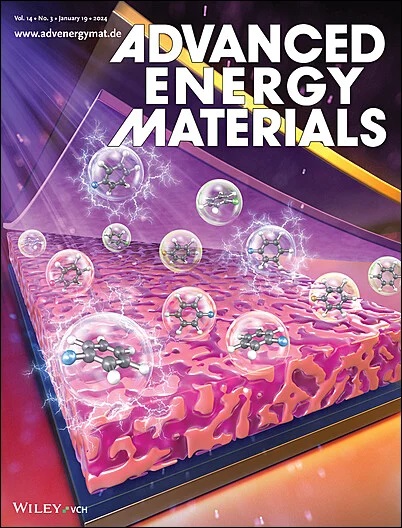Achieving High Energy Density in Aqueous Zinc-Ion Batteries
IF 24.4
1区 材料科学
Q1 CHEMISTRY, PHYSICAL
引用次数: 0
Abstract
Aqueous zinc-ion batteries (AZIBs) have garnered significant attention as promising alternatives to lithium-ion batteries, offering advantages such as high safety, cost-effectiveness, and environmental friendliness. Despite their potential, achieving high energy density (ED) remains a key challenge for AZIBs to compete with state-of-the-art energy storage technologies. This review explores the fundamental principles, challenges, and recent advances in AZIBs with a focus on enhancing ED. Key developments in cathode materials, including high-voltage and high-capacity designs, are discussed alongside innovations in zinc anode engineering to suppress dendrite formation and improve utilization rates. Advances in ultrathin separator technologies and lean electrolyte configurations are also highlighted, showcasing their contributions to improving volumetric and gravimetric EDs. Additionally, the review identifies strategies to address practical challenges in scaling up AZIBs for industrial applications. By integrating breakthroughs in materials, electrolytes, and battery design techniques, AZIBs hold promise as next-generation energy storage solutions for grid-scale systems. Moreover, a perspective on future directions is proposed, emphasizing the need for interdisciplinary collaboration to overcome remaining barriers and realize the full potential of AZIBs.

实现水锌离子电池的高能量密度
水性锌离子电池(azib)作为锂离子电池的替代品,具有安全性高、成本效益高、环境友好等优点,受到了广泛关注。尽管azib具有潜力,但实现高能量密度(ED)仍然是azib与最先进的储能技术竞争的关键挑战。本文探讨了azib的基本原理、挑战和最新进展,重点是增强ED。阴极材料的关键发展,包括高压和大容量设计,以及锌阳极工程的创新,以抑制枝晶的形成和提高利用率。超薄分离器技术和稀薄电解质配置的进步也得到了强调,展示了它们对改善体积和重量EDs的贡献。此外,该审查确定了应对工业应用中扩大azib的实际挑战的策略。通过整合材料、电解质和电池设计技术的突破,azib有望成为电网规模系统的下一代储能解决方案。此外,对未来的发展方向提出了展望,强调跨学科合作的必要性,以克服剩余的障碍,实现azib的全部潜力。
本文章由计算机程序翻译,如有差异,请以英文原文为准。
求助全文
约1分钟内获得全文
求助全文
来源期刊

Advanced Energy Materials
CHEMISTRY, PHYSICAL-ENERGY & FUELS
CiteScore
41.90
自引率
4.00%
发文量
889
审稿时长
1.4 months
期刊介绍:
Established in 2011, Advanced Energy Materials is an international, interdisciplinary, English-language journal that focuses on materials used in energy harvesting, conversion, and storage. It is regarded as a top-quality journal alongside Advanced Materials, Advanced Functional Materials, and Small.
With a 2022 Impact Factor of 27.8, Advanced Energy Materials is considered a prime source for the best energy-related research. The journal covers a wide range of topics in energy-related research, including organic and inorganic photovoltaics, batteries and supercapacitors, fuel cells, hydrogen generation and storage, thermoelectrics, water splitting and photocatalysis, solar fuels and thermosolar power, magnetocalorics, and piezoelectronics.
The readership of Advanced Energy Materials includes materials scientists, chemists, physicists, and engineers in both academia and industry. The journal is indexed in various databases and collections, such as Advanced Technologies & Aerospace Database, FIZ Karlsruhe, INSPEC (IET), Science Citation Index Expanded, Technology Collection, and Web of Science, among others.
 求助内容:
求助内容: 应助结果提醒方式:
应助结果提醒方式:


